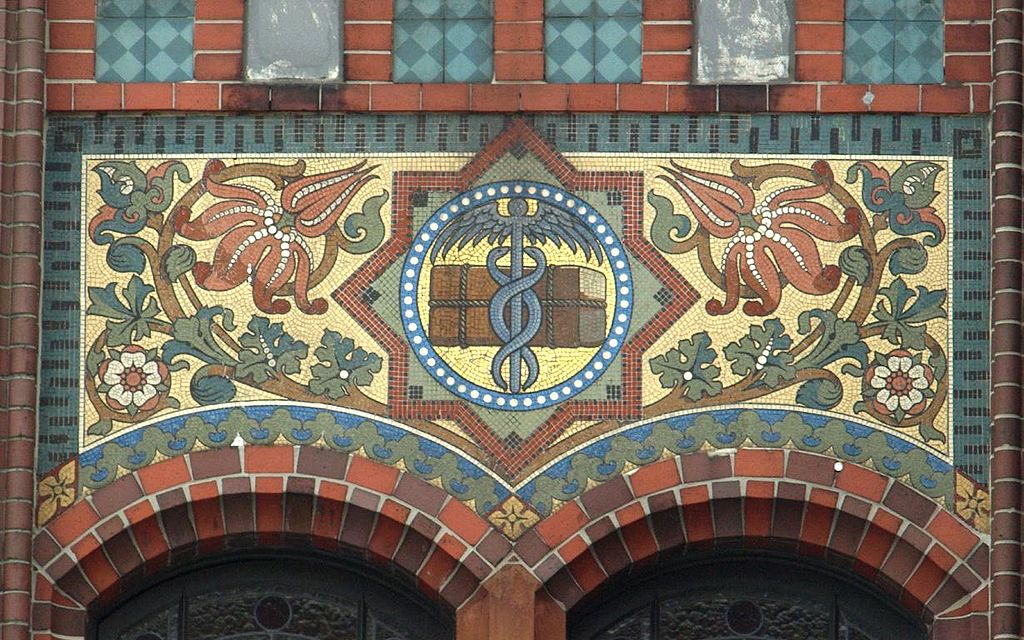Your Patient Is Now Reading Your Note: Opportunities, Problems, and Prospects From Researchers at U of Washington and Harvard Med School

Caduceus at the town hall of Neumünster (Germany) by Uwe Barghaan, Wikipedia; Neumünster - Schleswig-Holstein (Germany), Mosaic at the town hall,
Jared W. Klein, MD, MPH Sara L. Jackson, MD, MPH Sigall K. Bell, MD Jan Walker, RN, MBA Tom Delbanco, MD Joann G. Elmore, MD, MPH Show al (Editor's Note: Researchers at the Univ. of Washington and Harvard Medical School)
Patients have unprecedented online access to their medical records. More than 6 million Americans can now read their doctors' notes via patient portals, and continued rapid growth is likely.
Sharing notes with patients may yield important health benefits, including increased patient empowerment and improved medication adherence.
As fully transparent medical records proliferate, many questions remain unanswered (Table 1). Such uncertainties create anxiety and apprehension among doctors at a time when many already feel overwhelmed. In an effort to ease the transition to what we believe will be a widespread and ultimately beneficial practice, we draw on over 5 years of the authors' clinical experience and conversations with clinicians around the country to offer suggestions for creating notes that can work for all concerned (Table 2).
Table 1: Outstanding Questions About Open Notes
|
Table 2Suggestions for Implementing Open Notes in Clinical Practice
| Suggestion | Examples |
|---|---|
| Be clear and succinct |
|
| Directly and respectfully address concerns |
|






